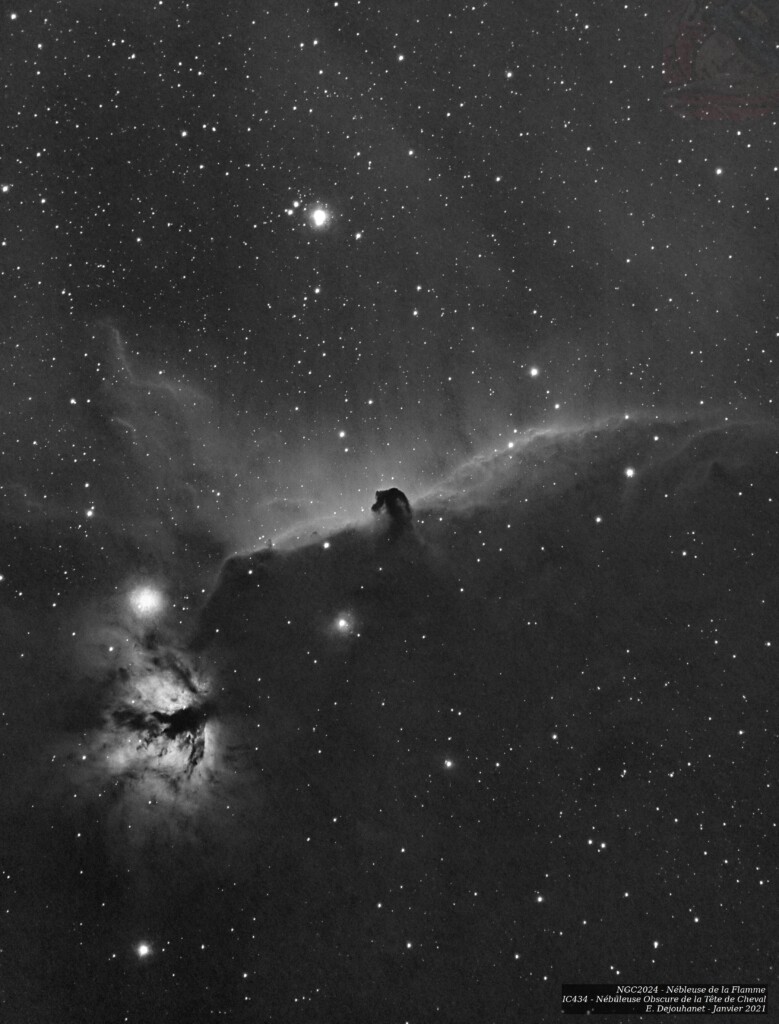IC434 – Horse Head area
In the same constellation as the Great Orion Nebula, up north, there is a immense hydrogen cloud field offering a great background to two fantastic objects…

The most famous one is the Horse Nebula, named after its shape as seen from our direction and catalogued as Barnard 33. It is a dark dust nebula located a few hundred light years closer to us than IC434. The Hubble telescope produced amazing pictures of this nebula.
The second object is the Flame Nebula, catalogued as NGC 2024. It is an emissive cloud energised by Zeta Orionis, one of the three stars of the Orion Belt. Zeta Orionis, known as Alnitak, is a huge blue giant and shepherd of a complex triple star system.
This particular capture is the result of multiple attempts. For some reason, this target keeps evading for various reasons. Because it is a winter target, it should benefit from colder temperatures and thus a clearer sky. I had planned to assemble a 2×2 mosaic, but no, thin clouds, calibration issues, mechanical problems always got in the way… And when you choose a 2×2 mosaic for a centered object, if your panes go wrong, you end up with unusable data.
This image is a simple centered frame, and is supposed to show 3.5 hours of Hydrogen-Alpha. The stack is probably nearer to 2 hours because of calibration and guiding issues, and the process was relatively painful. I also grabbed a handful of R, G and B but far too few for them to make it into the stack.
Notably, this session took place before the installation of belts in the mount. I’ll be back on this target for sure.
The exposures were all managed by KDE KStars, with the Atik Horizon 2 on the Orion ED80T and HEQ5-Pro. All processing done with PixInsight 1.8.